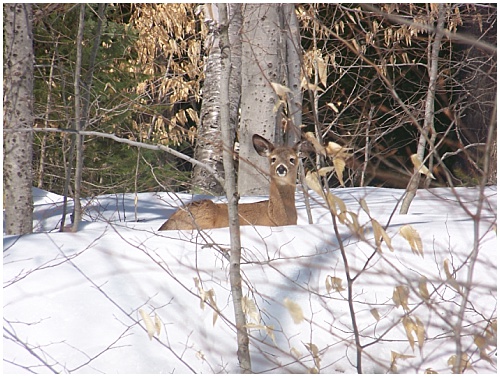April 1, 2021 at 11:53 am
Extended periods of deep snow and cold temperatures during winter can have a significant effect on the survival of white-tailed deer in Maine, especially in the northern part of the state. MDIFW has long recognized this relationship and has spent, and continues to spend, considerable resources in terms of workforce hours to collect information that helps us better understand this dynamic.

Each week from early December to late April, regional wildlife biologists across the state venture out to winter severity stations to collect data on snow depths and deer sinking depths. These stations are all located in deer wintering areas. In addition, each station includes five snow depth measuring stakes in deciduous or “open habitat” where the snow is often the deepest along with five stakes in coniferous or “cover habitat” where snow depths can be considerably less. Each station also has a weather shelter box equipped with a small temperature device that records continuous temperatures throughout the entire winter that later can be downloaded into a computer.
These data are then entered into a formula by Maine’s deer biologist, Nathan Bieber, to estimate the winter mortality rate (WMR) of deer for each wildlife management district (WMD). We then compare these numbers to the “typical” or average wintering conditions to adjust the number of does (antlerless deer) we want to harvest the following hunting season to account for winters that are milder (greater survival) or more severe (higher mortality) than normal. This helps maintain a healthy white-tailed deer population.
Unlike the more severe winter of 2018-2019, this winter is shaping up to be very mild or below average. If this mild trend continues through April, the survival of all age classes of deer will be very good, including the fawns that were born last spring.
Learn more about white-tailed deer and deer management at mefishwildlife.com/deer